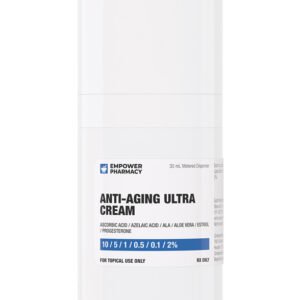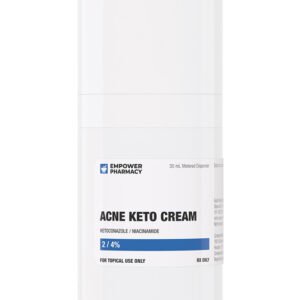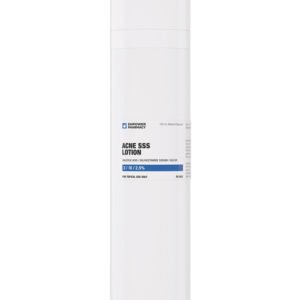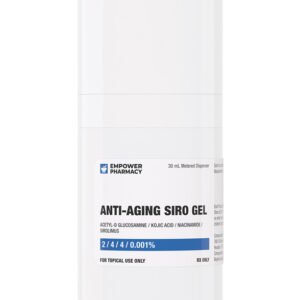Semaglutide
Semaglutide is contraindicated in patients with a history of angioedema, anaphylaxis, or other serious hypersensitivity reaction to semaglutide. There is a risk of serious hypersensitivity reactions with semaglutide. Serious hypersensitivity reactions have also been reported during postmarketing use with other GLP-1 receptor agonists. Use caution in patients with a history of anaphylaxis or angioedema to other GLP-1 receptor agonists because it is unknown whether such patients will be predisposed to serious reactions with semaglutide. If a serious hypersensitivity reaction is suspected, discontinue semaglutide. Treat promptly per standard of care, and monitor until signs and symptoms resolve.
Semaglutide is contraindicated in patients with a personal or family history of certain types of thyroid cancer, specifically thyroid C-cell tumors such as medullary thyroid carcinoma (MTC), or in patients with multiple endocrine neoplasia syndrome type 2 (MEN 2). Semaglutide has been shown to cause dose-dependent and treatment duration-dependent malignant thyroid C-cell tumors at clinically relevant exposures in both genders of rats and mice. A statistically significant increase in cancer was observed in rats receiving semaglutide at all dose levels (greater than 2X human exposure). It is unknown whether semaglutide causes thyroid C-cell tumors, including medullary thyroid carcinoma (MTC), in humans. Cases of MTC in patients treated with liraglutide, another GLP-1 receptor agonist, have been reported in the postmarketing period; the data in these reports are insufficient to establish or exclude a causal relationship between MTC and GLP-1 receptor agonist use in humans. In clinical trials, there were 7 reported cases of papillary thyroid carcinoma in patients treated with liraglutide and 1 case in a comparator-treated patient (1.5 vs. 0.5 cases per 1,000 patient-years). Most of these papillary thyroid carcinomas were less than 1 cm in greatest diameter and were diagnosed after thyroidectomy, which was prompted by finding on protocol-specified screening with serum calcitonin or thyroid ultrasound. Patients should be counseled on the potential risk and symptoms of thyroid tumors (e.g. a mass in the neck, dysphagia, dyspnea or persistent hoarseness). Although routine monitoring of serum calcitonin is of uncertain value in patients treated with semaglutide, if serum calcitonin is measured and found to be elevated, the patient should be referred to an endocrinologist for further evaluation.
Semaglutide should not be used for the treatment of type 1 diabetes mellitus.
Hypoglycemia should be monitored for by the patient and clinician when semaglutide treatment is initiated and continued for type 2 diabetes mellitus (T2DM) and when used for weight reduction and maintenance. In a clinical trial of semaglutide injection for weight loss in patients with T2DM and a BMI of 27 kg/m2 or more, hypoglycemia (defined as a plasma glucose less than 54 mg/dL) was reported in 6.2% of semaglutide-treated patients versus 2.5% of placebo-treated patients. One episode of severe hypoglycemia (requiring the assistance of another person) was reported in one semaglutide-treated patient versus no placebo-treated patients. In clinical trials of semaglutide injection for T2DM (Ozempic), hypoglycemia was increased when semaglutide was used in combination with a sulfonylurea; patients receiving semaglutide in combination with an insulin secretagogue (e.g., sulfonylurea) or insulin may have an increased risk of hypoglycemia, including severe hypoglycemia. Although specific dose recommendations are not available, the clinician should consider a dose reduction of the sulfonylurea or insulin when used in combination with semaglutide. In addition, when semaglutide is used in combination with insulin detemir, the dose of insulin should be evaluated; in patients at increased risk of hypoglycemia consider reducing the dose of insulin at initiation of semaglutide, followed by careful titration. Adequate blood glucose monitoring should be continued and followed. Patient and family education regarding hypoglycemia management is crucial; the patient and patient’s family should be instructed on how to recognize and manage the symptoms of hypoglycemia. Early warning signs of hypoglycemia may be less obvious in patients with hypoglycemia unawareness which can be due to a long history of diabetes (where deficiencies in the release or response to counter regulatory hormones exist), with autonomic neuropathy, intensified diabetes control, or taking beta-blockers, guanethidine, or reserpine. Patients should be aware of the need to have a readily available source of glucose (dextrose, d-glucose) or other carbohydrate to treat hypoglycemic episodes. In severe hypoglycemia, intravenous dextrose or glucagon injections may be needed. Because hypoglycemic events may be difficult to recognize in some elderly patients, antidiabetic agent regimens should be carefully managed to obviate an increased risk of severe hypoglycemia. Severe or frequent hypoglycemia in a patient is an indication for the modification of treatment regimens, including setting higher glycemic goals. Semaglutide may have particular benefits when used in patients with T2DM who are overweight. According to the American Association of Clinical Endocrinologists and American College of Endocrinology (AACE/ACE) Obesity Clinical Practice Guidelines, weight loss medications should be considered as an adjunct to lifestyle therapy in all patients with T2DM as needed for weight loss sufficient to improve glycemic control, lipids, and blood pressure.
Semaglutide has not been studied in patients with a history of pancreatitis to determine whether these patients are at increased risk for pancreatitis. After initiation and dose increases, patients should be observed carefully for signs and symptoms of pancreatitis (including persistent severe abdominal pain, sometimes radiating to the back and which may or may not be accompanied by vomiting). If pancreatitis is suspected, discontinue semaglutide; if pancreatitis is confirmed, do not resume semaglutide. Acute pancreatitis, including fatal and non-fatal hemorrhagic or necrotizing pancreatitis, has been observed in patients treated with GLP-1 receptor agonists, including semaglutide. The FDA and the EMA have stated that after review of published and unpublished reports, the current data do not support an increased risk of pancreatitis and pancreatic cancer in patients receiving incretin mimetics. The agencies have not reached any new conclusions about safety risks of the incretin mimetics, although they have expressed that the totality of the data that have been reviewed provides reassurance. Continue to consider precautions related to pancreatic risk until more data are available. According to the American Association of Clinical Endocrinologists and American College of Endocrinology (AACE/ACE) Obesity Clinical Practice Guidelines, obese patients receiving incretin-based therapies for weight loss should be monitored for the development of pancreatitis. Incretin-based therapies should be avoided in patients with prior or current pancreatitis; otherwise, there are insufficient data to recommend withholding them for weight loss due to concerns of pancreatitis.
Use semaglutide with caution in patients with known gallbladder disease or a history of cholelithiasis. If cholelithiasis or cholecystitis are suspected in a patient taking semaglutide, gallbladder studies are indicated. Acute gallbladder disease events, such as cholecystitis or cholelithiasis, have been reported in clinical studies. In clinical trials of semaglutide injection for type 2 diabetes mellitus (T2DM), cholelithiasis was reported in 1.5% and 0.4% of patients-treated with semaglutide 0.5 mg and 1 mg subcutaneous injection, respectively. Cholelithiasis was not reported in placebo-treated patients. In clinical trials of semaglutide tablets for T2DM, cholelithiasis was reported in 1% of patients-treated with semaglutide 7 mg tablets. Cholelithiasis was not reported in patients receiving the 14 mg tablets or placebo-treated patients. In clinical trials of semaglutide injection for weight management, cholelithiasis was reported in 1.6% of semaglutide-treated patients compared with 0.7% of placebo-treated patients. Cholecystitis was reported in 0.6% and 0.2% of patients, respectively. Substantial or rapid weight loss can increase the risk of cholelithiasis; however, the incidence of acute gallbladder disease was greater in semaglutide-treated patients than in placebo-treated patients, even after accounting for the degree of weight loss. According to the American Association of Clinical Endocrinologists and American College of Endocrinology (AACE/ACE) Obesity Clinical Practice Guidelines, close monitoring for cholelithiasis is recommended during weight loss therapy, regardless of modality. In high-risk patients, use semaglutide with caution. Effective preventative measures for patients at risk for cholelithiasis include a slower rate of weight loss, increasing/including some dietary fat in the diet (assuming the patient has been on a very low-calorie diet containing little or no fat), or administration of ursodeoxycholic acid.
During semaglutide therapy, patients with a history of diabetic retinopathy should be closely monitored. Inform patients to contact their care team if changes in vision are experienced during treatment. There is an increased risk for diabetic retinopathy complications in patients with a history of diabetic retinopathy at baseline compared to patients without a known history of diabetic retinopathy. In a 2-year trial involving patients with type 2 diabetes mellitus (T2DM) and high cardiovascular risk, more events of diabetic retinopathy complications occurred in patients treated with semaglutide 0.5 and 1 mg once weekly injections (3%) compared to placebo (1.8%). The absolute risk increase for diabetic retinopathy complications was larger among patients with a history of diabetic retinopathy at baseline (semaglutide injection 8.2%, placebo 5.2%) than among patients without a known history of diabetic retinopathy (semaglutide injection 0.7%, placebo 0.4%). In a pooled analysis of glycemic control trials with oral semaglutide, diabetic retinopathy complications occurred in 4.2% of T2DM patients receiving semaglutide and 3.8% with comparator. In a trial of semaglutide injection in patients with T2DM and BMI of 27 kg/m2 or more, diabetic retinopathy was reported by 4% of semaglutide-treated patients vs. 2.7% of placebo-treated patients. Rapid improvement in glucose control has been associated with a temporary worsening of diabetic retinopathy. The effect of long-term glycemic control with semaglutide on diabetic retinopathy complications has not been studied.
Use caution during treatment with semaglutide in patients with renal impairment or end-stage renal disease (renal failure); however, no dose adjustments are needed based on renal function. Use caution and monitor renal function when initiating or increasing doses of semaglutide in patients with renal impairment or any patients who report severe gastrointestinal reactions during use. There have been postmarketing reports of renal impairment, acute kidney injury, and worsening of chronic renal failure, which sometimes has required hemodialysis, in patients treated with GLP-1 receptor agonists. Some of these events have been reported in patients without known underlying renal disease. In many of these cases, altered renal function has been reversed with supportive treatment and discontinuation of potentially causative agents. A majority of the reported events occurred in patients who had experienced nausea, vomiting, diarrhea, or dehydration.
Suicidal behavior and ideation have been reported in clinical trials with other incretin mimetics indicated for weight management. Therefore, when semaglutide is used for weight management, administer with caution in patients with depression and avoid use in patients with a history of suicide attempts or active suicidal ideation; monitor patients for the emergence or worsening of depression, suicidal thoughts or behavior, and any unusual changes in moods or behaviors. Discontinue semaglutide in patients who develop suicidal thoughts or behaviors. According to the American Association of Clinical Endocrinologists and American College of Endocrinology (AACE/ACE) Obesity Clinical Practice Guidelines, all patients undergoing weight loss therapy should be monitored for mood disorders, depression, and suicidal ideation. Caution is recommended in patients with a psychotic disorder (e.g., schizophrenia due to insufficient data. Patients receiving an antipsychotic should be treated with structured lifestyle modifications to promote weight loss and weight gain prevention; these guidelines suggest that metformin may be beneficial for modest weight loss and metabolic improvements in patients receiving an antipsychotic.
Semaglutide for the treatment of obesity or weight management should not be used during pregnancy because weight loss offers no potential benefit to a pregnant woman and may result in fetal harm due to the potential hazard of maternal weight loss to the fetus. According to the American Association of Clinical Endocrinologists the and American College of Endocrinology (AACE/ACE) Obesity Clinical Practice Guidelines, weight loss medications must not be used during pregnancy; these guidelines recommend contraception requirements for patients of childbearing potential; those receiving semaglutide for weight reduction should use adequate contraception and discontinue semaglutide if pregnancy occurs. There are no adequate data or clinical studies of semaglutide use for the treatment of type 2 diabetes mellitus (T2DM) in pregnant women to inform a drug-associated risk for adverse developmental outcomes; use in pregnancy only if the potential benefit justifies the potential risk to the fetus. Rat studies have noted embryofetal mortality, structural abnormalities, and alterations to growth at maternal exposures below the maximum recommended human dose (MRHD) based on exposure AUC. In rabbits and cynomolgus monkeys administered semaglutide during organogenesis, early pregnancy losses and structural abnormalities were observed at below the MRHD (rabbit) and 5-fold or greater the MRHD (monkey). Poorly controlled diabetes during pregnancy also increases fetal risk. In addition, salcaprozate sodium (SNAC), an absorption enhancer in oral semaglutide tablets, crosses the placenta, and reaches fetal tissues in rats. In a pre- and postnatal development study of SNAC exposure, an increase in gestation length, an increase in the number of stillbirths, and a decrease in pup viability were observed. The American College of Obstetricians and Gynecologists (ACOG) and the American Diabetes Association (ADA) continue to recommend human insulin as the standard of care in pregnant women with diabetes mellitus and gestational diabetes mellitus (GDM) requiring medical therapy; insulin does not cross the placenta.
Semaglutide may be associated with reproductive risk and preconceptual planning is recommended; females of childbearing potential should discontinue semaglutide at least 2 months before a planned pregnancy due to the drug’s long washout period.
Use injectable semaglutide with caution during lactation; oral semaglutide therapy is not recommended during breastfeeding. There are no data on the presence of semaglutide in human milk, the effects on the breastfed infant, or the effects on milk production. Semaglutide was present in the milk of lactating rats and was detected at levels 3- to 12- fold lower than in maternal rat plasma. Salcaprozate sodium (SNAC) (an absorption enhancer in oral semaglutide tablets) and/or its metabolites concentrated in the milk of lactating rats. There are no data on the presence of SNAC in human milk. Since the activity of UGT2B7, an enzyme involved in SNAC clearance, is lower in infants compared to adults, higher SNAC plasma levels may occur in neonates and infants. Because of the unknown potential for serious adverse reactions in the breastfed infant due to the possible accumulation of SNAC from breastfeeding and because semaglutide injection can be considered for use during lactation, advise patients that breastfeeding is not recommended during treatment with oral semaglutide tablets. If semaglutide is discontinued and blood glucose is not controlled on diet and exercise alone, insulin therapy should be considered. Other oral hypoglycemics may be considered as possible alternatives during breastfeeding. Because acarbose has limited systemic absorption, which results in minimal maternal plasma concentrations, clinically significant exposure via breast milk is not expected. Also, while the manufacturers of metformin recommend against breastfeeding while taking the drug, data have shown that metformin is excreted into breast milk in small amounts and adverse effects on infant plasma glucose have not been reported in human studies. Tolbutamide is usually considered compatible with breastfeeding. Glyburide may also be a suitable alternative since it was not detected in the breast milk of lactating women who received single and multiple doses of glyburide. If any oral hypoglycemics are used during breastfeeding, the nursing infant should be monitored for signs of hypoglycemia, such as increased fussiness or somnolence.
Semaglutide has been studied in adults 65 years of age or older during clinical trials; safety and efficacy were not different in geriatric adults versus younger adults. In general, however, geriatric adults are especially at risk for hypoglycemic episodes. The specific reasons identified include intensive insulin therapy, decreased renal function, severe liver disease, alcohol ingestion, defective counter regulatory hormone release, missing meals/fasting, and gastroparesis. Because hypoglycemic events may be difficult to recognize in some elderly patients, antidiabetic agent regimens should be carefully managed to obviate an increased risk of severe hypoglycemia. Severe or frequent hypoglycemia is an indication for the modification of treatment regimens, including setting higher glycemic goals. The federal Omnibus Budget Reconciliation Act (OBRA) regulates medication use in residents of long-term care facilities (LTCFs). According to OBRA, the use of antidiabetic medications should include monitoring (e.g., periodic blood glucose) for effectiveness based on desired goals for that individual and to identify complications of treatment such as hypoglycemia or impaired renal function.
Cyanocobalamin
Cyanocobalamin is contraindicated in those with hypersensitivity to cobalt moiety or cobalamin molecule due to the risk of anaphylaxis.
Warnings:
The use of cyanocobalamin is warned in patients with early Leber’s disease as there have been reports of severe and swift optic atrophy with its administration. Appropriate caution should be exercised while treating severe megaloblastic anemia with cyanocobalamin as intense treatment may lead to hypokalemia and sudden death. Cautious use of parenteral cyanocobalamin is also recommended in patients with renal impairment, including premature neonates, because of the possibility of greater aluminum accumulation, which may cause central nervous system and bone toxicity. Formulations of cyanocobalamin injection containing benzyl alcohol as a preservative should also be avoided in premature neonates and those with hypersensitivity due to its association with ‘gasping syndrome.
Monitoring:
A history of the patient’s allergies/hypersensitivity should be obtained before administering cyanocobalamin injection. If the patient is suspected to be sensitive to cobalt or other components of cobalamin, an intradermal test dose is recommended.
Several laboratory tests should be performed prior to treatment with cyanocobalamin, including serum vitamin B12, folate, iron, hematocrit, and reticulocyte count. All these parameters need to be normal before initiating the treatment. Serum levels of vitamin B12 and peripheral blood counts should be monitored in one month. For hematocrit and reticulocyte counts, recommendations are to repeat these tests daily from the 5th to 7th days of treatment and then frequently until the hematocrit returns to a normal range.
Both serum potassium concentrations and the platelet count need to be monitored carefully after parenteral administration of cyanocobalamin. This is because hypokalemia and thrombocytosis could occur due to the increase in erythrocyte metabolism following vitamin B12 therapy. Potassium replacement therapy should be administered if necessary.
Patients with pernicious anemia are three times more likely to have gastric carcinoma compared to general population; thus, appropriate tests need to be carried out to rule out this condition if suspected.
Therapeutic response to cyanocobalamin may decrease due to elderly age, infection, renal insufficiency, diabetes mellitus, marrow suppressants use (e.g. chloramphenicol), and concurrent iron or folic acid deficiency. Therefore, these factors should be taken into consideration and regular monitoring should be performed in these conditions while treating vitamin B12 deficiency with cyanocobalamin.






Reviews
There are no reviews yet.